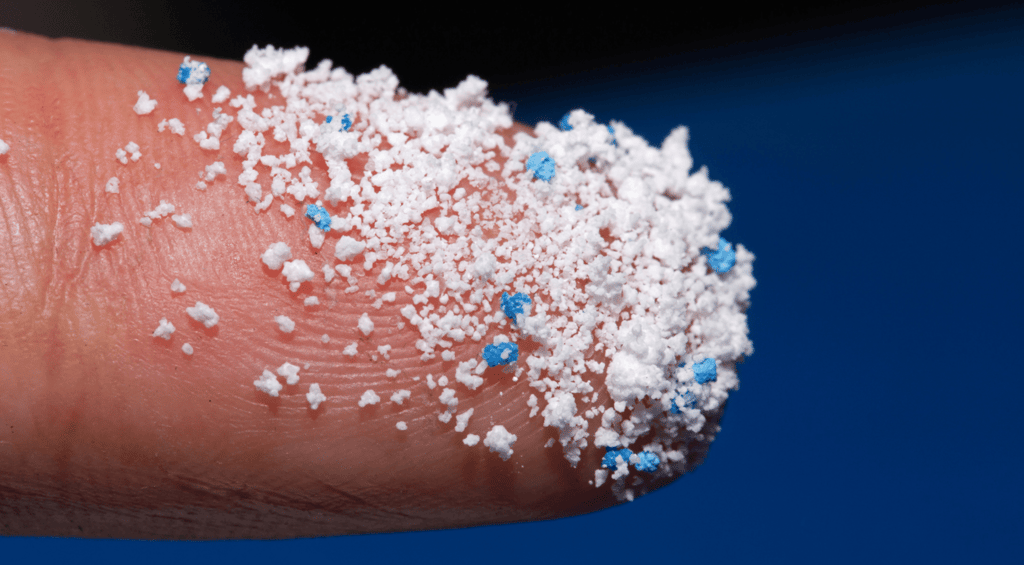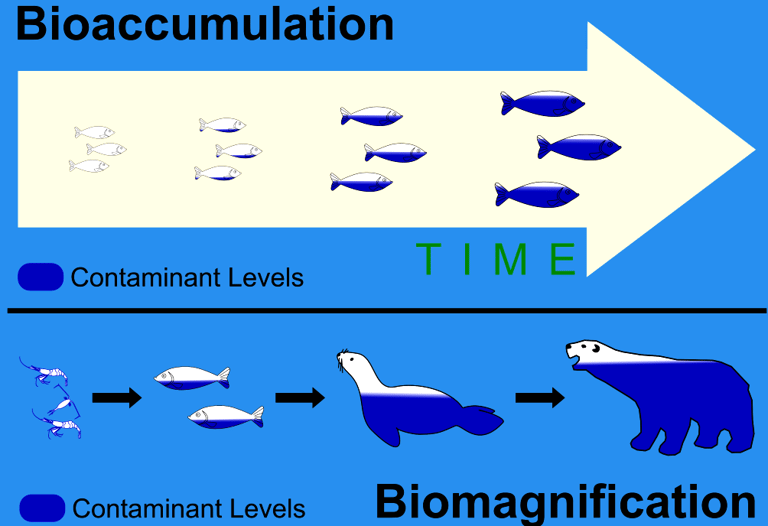Microplastics in the Ocean: Hidden Dangers to Marine Life and Humans
Global cooperation and innovation in sustainable practices are important for addressing the problems due to microplastics.


Introduction
Microplastics are pieces of plastic less than 5mm in size and are widespread in the environment.¹ They are formed through the degradation of larger plastic items and are found in various ecosystems, including freshwater, ocean, and even the atmosphere.² As these small particles accumulate, they pose a danger not only to marine organisms but also to humans.
The impacts of these tiny particles on marine life
Marine organisms, from plankton to large fish ingest these microplastics mistaking them for food. This ingestion can lead to harmful effects like physical harm, chemical exposure, and toxic materials.³ The ingestion of microplastics interrupts the normal feeding process of organisms and can lead to reduced growth, survival, and reproductive success in marine species. Moreover, these particles act as carriers for harmful chemicals and toxins that further harm the marine ecosystem.
What is bioaccumulation and biomagnification?
Microplastics can bioaccumulate in the tissues of marine organisms leading to biomagnification through the food chain.⁴ As predatory species consume prey that has ingested microplastics, the concentrations of these particles and their associated toxins increase. This process not only disturbs the marine ecosystem but also poses a significant danger to humans who consume seafood contaminated with microplastics.
Implication on human health
The health implications due to the consumption of microplastic by humans is an area of growing concern. Research has shown that microplastics and their associated toxic compounds can enter the human body through seafood consumption.⁵ These contaminants can lead to various health issues, including reproductive harm, development issues in children, and other long-term effects.
Conclusion
In conclusion, we can say that microplastics have diverse and harmful effects on both human and marine life and they can lead to various problems for organisms to prevent that we need to implement comprehensive strategies including improvement of waste management practices, promoting recycling efforts, and reducing plastic production. Global cooperation and innovation in sustainable practices are important for addressing the problems caused by microplastics.
Bibliography
Haga, Y., Manabe, S., Tsujino, H., Asahara, H., Higashisaka, K., & Tsutsumi, Y. (2024). [Mechanisms of Cell Toxicity Caused by Degraded Microplastics]. Yakugaku Zasshi : Journal of the Pharmaceutical Society of Japan. https://www.semanticscholar.org/paper/f4f692f13e118639dc40dec46b1bf2dd9551c6e4
Özgenç, E., Keleş, E., & Töre, G. Y. (2023). Assessment of biomarker-based ecotoxic effects in combating microplastic pollution - A review. Global NEST Journal. https://www.semanticscholar.org/paper/2329e0f20648019d2e3e5dd34f5168b5795791d3
Das, S., & Tegadye, D. G. (2023). Impact of Nanoplastics on Marine Life: A Review. Nature Environment and Pollution Technology. https://www.semanticscholar.org/paper/3408eb95ff1dd4b54bbb2c911ce4e845767d6aae
Wierckx, N., Prieto, M. A., Pomposiello, P., Lorenzo, V., O’Connor, K., & Blank, L. (2015). Plastic waste as a novel substrate for industrial biotechnology. Microbial Biotechnology. https://onlinelibrary.wiley.com/doi/10.1111/1751-7915.12312
Davis, E. K., & Raja, S. (2020). Sources and Impact of Microplastic Pollution in Indian Aquatic Ecosystem: A Review. https://www.semanticscholar.org/paper/d7da4794793324d3ff1ff81f37116cdd357d5688
Arthur, C., Baker, J., & Bamford, H. A. (2009). Proceedings of the International Research Workshop on the Occurrence, Effects, and Fate of Microplastic Marine Debris, September 9-11, 2008, University of Washington Tacoma, Tacoma, WA, USA. https://www.semanticscholar.org/paper/7f8c9dd6437a34f96812836c66ca83d69f7ea9eb
Rhodes, C. (2018). Plastic Pollution and Potential Solutions. Science Progress. https://www.semanticscholar.org/paper/f95421bfee0817c3bfdde2579e18a55e32c9f728


image courtesy of blue-growth.org
